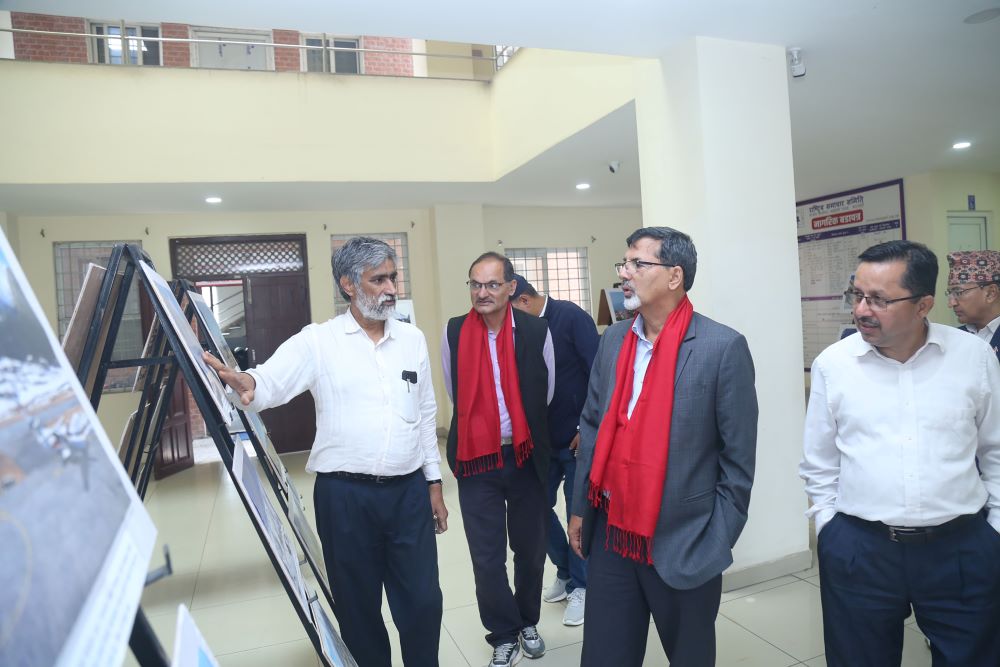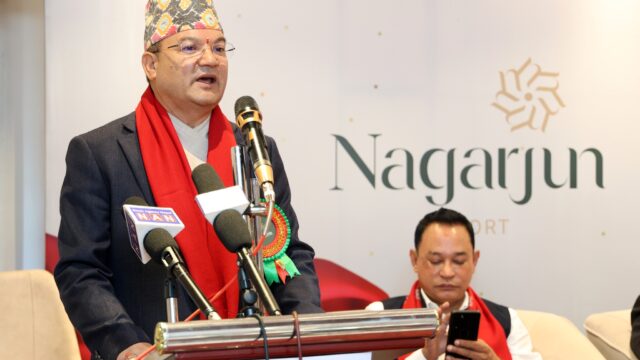Former Minister and CPN (Maoist Centre) leader Janardan Sharma has stressed the urgent need to protect Nepal’s Himalayan region, citing its significance as both a national treasure and a global asset. Speaking after his visit to a photo exhibition on mountaineering tourism at the central office of Rastriya Samachar Samiti (RSS), Sharma highlighted the dual challenge of preserving the natural beauty of the Himalayas while promoting them as sustainable tourism destinations.
Himalayas: Nepal’s Pride and Economic Capital
Addressing the audience at the exhibition, Janardan Sharma remarked that Nepal is home to the world’s tallest peaks, including Mount Everest, which are not only symbols of national pride but also possess vast untapped economic potential. “The Himalayas are not just our pride—they are also the capital of our country. Proper marketing and sustainable promotion of these majestic peaks can bring tremendous economic benefits,” Sharma stated.
He further added that while the Himalayas are blessed with breathtaking natural beauty, preserving that beauty has become an increasingly difficult task in the face of rising environmental challenges. “Safeguarding the Himalayas is not easy. The effects of climate change are visible and growing. We need to act now to protect these natural wonders for future generations,” he urged.
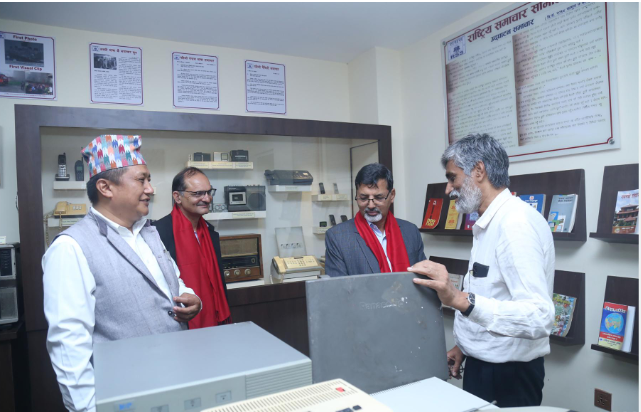
Photo Exhibition Highlights Himalayan Glory and Climate Crisis
The photo exhibition, hosted at the RSS central office, featured a compelling array of images showcasing Nepal’s mountain landscapes, mountaineering adventures, local cultures, and the growing impact of climate change. Organized with the goal of promoting mountain tourism and raising awareness about environmental degradation, the exhibition received praise from various quarters, including Sharma.
He appreciated the initiative of RSS in bringing together visual narratives that reflect not only the natural grandeur of the Himalayas but also the lives of people living in these remote regions. “These photographs document more than just scenic beauty. They tell the stories of communities, cultures, and the looming climate crisis,” he observed.
According to Sharma, such exhibitions play a crucial role in spreading awareness about conservation, promoting lesser-known destinations, and inspiring both domestic and international tourism.
The Role of Visual Storytelling in Tourism Promotion
Sharma lauded the role of photojournalism and visual documentation in promoting tourism and educating people about the challenges faced by the Himalayan region. “Photos speak to the heart. They communicate beyond words. This exhibition has managed to capture diverse aspects, from glacial retreat to the cultural richness of mountain communities,” he said.
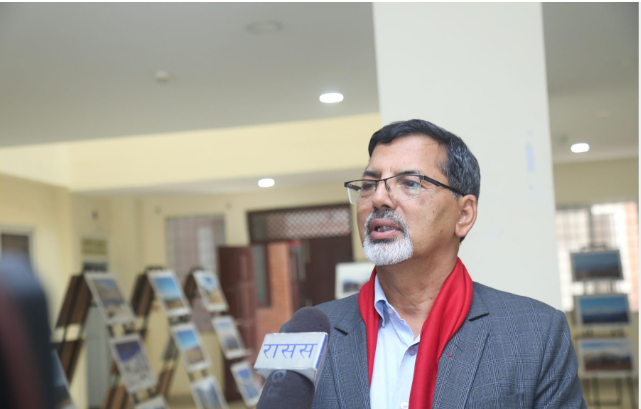
He also pointed out that the photo exhibition has created a platform to compile and present diverse elements of Nepal’s geography and society in one place. “Through these images, visitors are introduced to the lives, traditions, and challenges of mountain communities. It creates empathy, curiosity, and interest, which are key to tourism,” he added. Sharma expressed confidence that exhibitions like this will encourage more people to visit Nepal’s highlands and take an interest in both their preservation and their potential as tourist destinations.
Balancing Conservation with Development
While emphasizing the importance of economic development through tourism, Sharma also reminded stakeholders of the delicate balance that must be maintained between development and environmental conservation. “Yes, tourism is important for our economy. But unplanned or over-commercialized tourism can harm the very beauty we are trying to showcase,” he cautioned.
He advocated for a sustainable tourism model that respects local cultures, protects biodiversity, and minimizes the ecological footprint. “Tourism must be nature-friendly and people-centric. Only then can we ensure long-term benefits without destroying our environment,” he said. Sharma urged all concerned authorities, including the tourism ministry, local governments, and private sector operators, to adopt eco-sensitive policies that prioritize preservation alongside promotion.
Climate Change: A Growing Threat to the Himalayas
A major theme of Sharma’s remarks was the growing threat posed by climate change to Nepal’s mountainous regions. He pointed out that rising temperatures, melting glaciers, and unpredictable weather patterns are endangering not only the physical landscape but also the livelihoods of people living in mountain areas. “The climate crisis is no longer a distant problem. It is already affecting our glaciers, rivers, and settlements. If we fail to act now, the consequences will be irreversible,” Sharma warned.
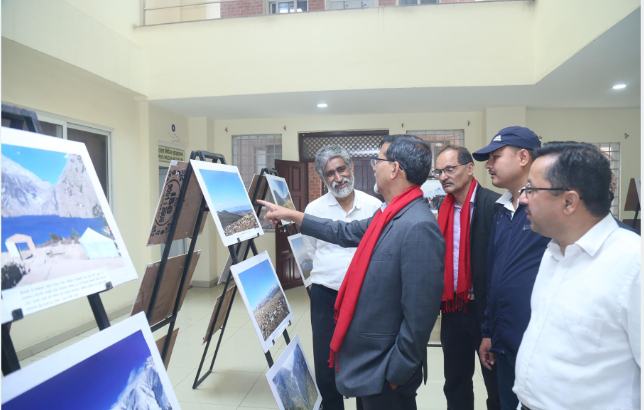
He stressed the need for stronger climate policies, international cooperation, and community-based conservation programs. “We must combine traditional knowledge with scientific research to tackle these challenges. Local communities must be empowered and included in all conservation efforts,” he added.
Future Vision for Mountain Tourism
In closing, Sharma emphasized the importance of creating a long-term vision for mountain tourism in Nepal. He called for strategic investment in infrastructure, better connectivity, promotion through global platforms, and enhanced visitor experiences.
He also called on media organizations like RSS to continue their role in highlighting environmental and cultural issues through exhibitions and publications. “The media can be a powerful ally in our efforts to protect and promote the Himalayas. Through compelling storytelling, they can influence public opinion and policymaking,” he said.
Janardan Sharma’s visit to the RSS photo exhibition served as a timely reminder of the Himalayas’ unique place in Nepal’s identity and economy. His message was clear: while the peaks offer immense potential for tourism and national prosperity, that potential must be harnessed responsibly. Through visual storytelling, community participation, and climate action, Nepal can ensure that its mountain treasures are preserved and celebrated for generations to come.
